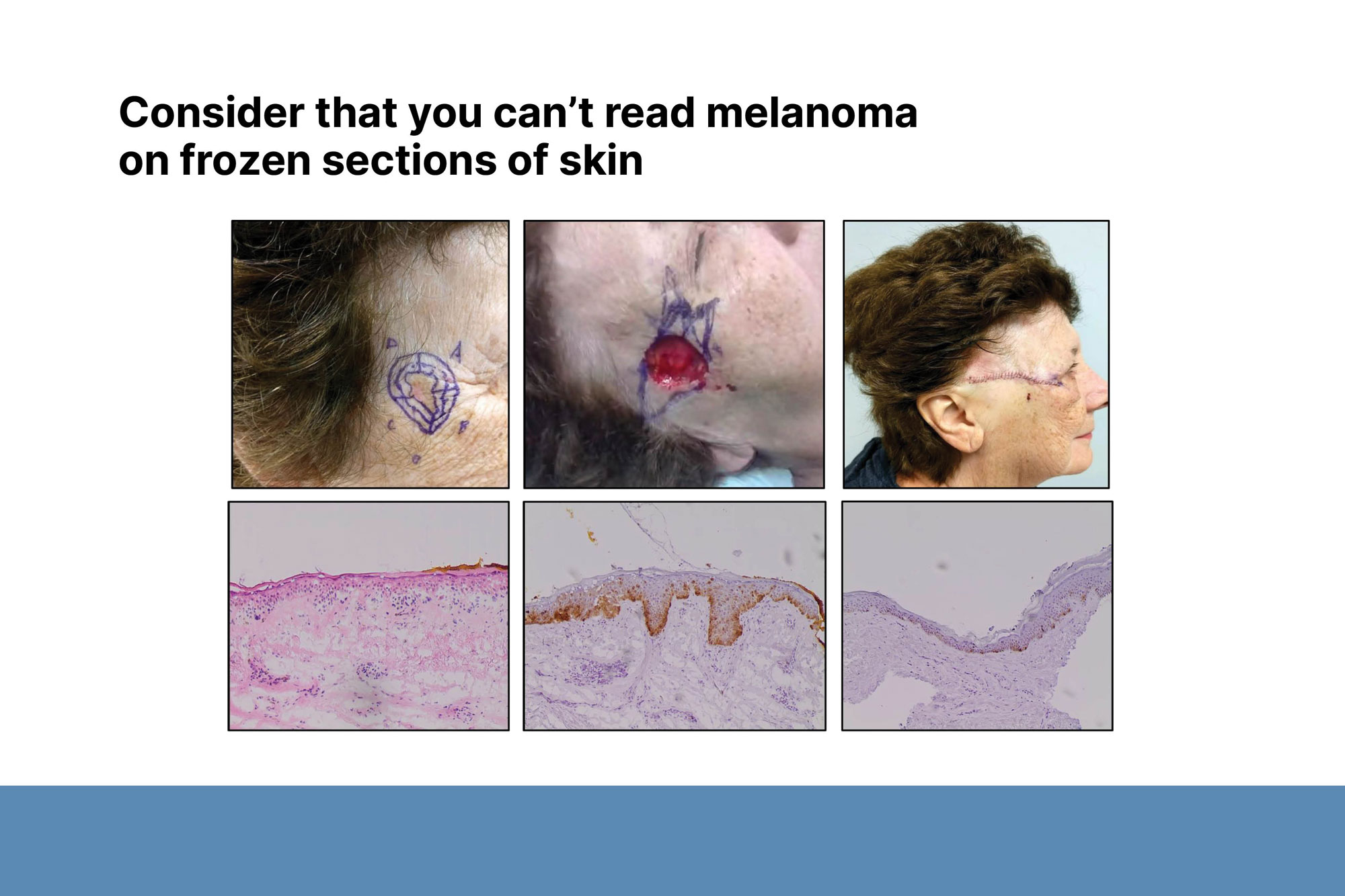Mohs for Melanoma
Jeremy S. Bordeaux, MD, MPH, Distinguished Physician, Director, Dermatologic Surgery Director, Multidisciplinary Cutaneous Oncology Program, Fellowship Director, Micrographic Surgery and Dermatologic Oncology, University Hospitals Cleveland Medical Center; Professor of Dermatology, Case Western Reserve University
June 2023
Dr. Bordeaux presented Mohs surgery for treating melanoma. Because melanomas are frequently ill-defined and often have many subclinical extensions, it is common for positive margins to remain after excision, leading to recurrence. Positive margin rates can be up to 20% (1 of 5 patients). Recurrence rates range from 8–20% for patients undergoing a wide local excision and only 5% for those undergoing Mohs.
In a recent systematic review and meta-analysis of recurrence rates for head and neck melanomas, Dr. Bordeaux and colleagues found that local recurrence rates were ~8% for wide local excisions, 6% for regular Mohs, and 2% for staged excisions (Slow Mohs).
Dr. Bordeaux now performs Mohs in real time. This procedure is done in one day with several advantages. Patients have negative margins, no need for re-excisions or repairs, and high cure rates.
Dr. Bordeaux’s key takeaway message was that Mohs decreases the local recurrence of melanoma and helps reduce the number of re-excisions that patients undergo due to positive margins.

This procedure is done in one day with several advantages. Patients have negative margins, no need for re-excisions or repairs, and high cure rates.
Learn more about the DF Clinical Symposium.

